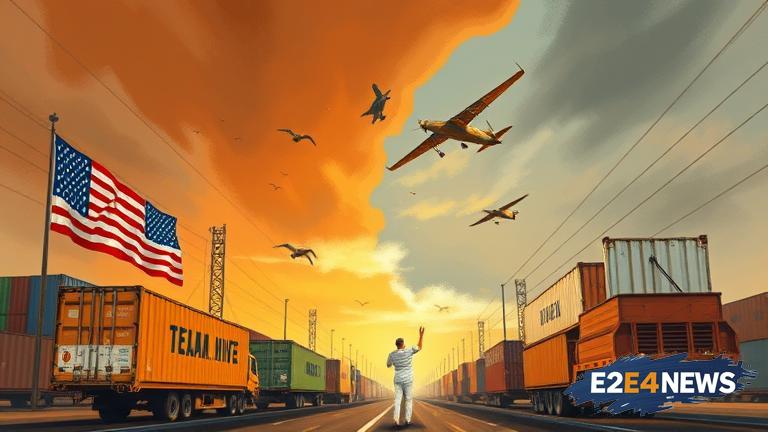The United States and India have been engaged in trade negotiations for several months, with the US seeking to reduce its trade deficit with India. The Trump administration has been pushing for greater market access for American products, including agricultural goods, pharmaceuticals, and medical devices. However, India has been resistant to these demands, citing concerns about the impact on its domestic industries. The US has threatened to impose tariffs on Indian goods, including textiles, jewelry, and pharmaceuticals, if a deal is not reached by August 1. The tariffs, which could be as high as 25%, would have a significant impact on Indian exporters, who rely heavily on the US market. The Indian government has been trying to negotiate a waiver from the tariffs, but so far, no agreement has been reached. The trade tensions between the two countries have been escalating in recent months, with the US imposing tariffs on Indian steel and aluminum exports. India has retaliated by imposing tariffs on US goods, including almonds, apples, and walnuts. The trade deal is not just about tariffs, but also about market access and investment. The US wants India to open up its markets to American companies, including in the areas of e-commerce, finance, and energy. India, on the other hand, wants the US to provide greater access to its markets for Indian companies, including in the areas of IT and pharmaceuticals. The trade negotiations have been complicated by the fact that India is a key player in the US’s Indo-Pacific strategy, which aims to counter China’s growing influence in the region. The US wants India to play a more prominent role in the strategy, but India has been hesitant to commit to any specific agreements. The trade deal is also being watched closely by other countries, including China, which is seeking to expand its own trade relationships with India. The US-India trade deal has the potential to be a major breakthrough in the relationship between the two countries, but it is still unclear whether an agreement can be reached. The August 1 deadline is looming large, and it remains to be seen whether the two countries can come to an agreement before then. The trade deal is not just about economics, but also about politics and geopolitics. The US-India relationship is seen as a key partnership in the Indo-Pacific region, and the trade deal has the potential to strengthen or weaken that partnership. The Indian government has been under pressure from domestic industries to protect their interests, while the US government has been under pressure from its own industries to secure greater market access. The trade negotiations have been ongoing for several months, with multiple rounds of talks having taken place. The US and India have a long history of trade relationships, with the US being one of India’s largest trading partners. However, the trade deficit between the two countries has been a major point of contention, with the US seeking to reduce its deficit and India seeking to increase its exports. The trade deal is seen as a major opportunity for both countries to strengthen their economic relationship and to promote greater cooperation in areas such as trade, investment, and technology. The US-India trade deal is also being seen as a test of the relationship between the two countries, with the outcome having significant implications for the future of the partnership. The trade negotiations have been led by the US Trade Representative and the Indian Commerce Minister, with multiple rounds of talks having taken place. The US has been pushing for a comprehensive trade agreement that covers a wide range of areas, including tariffs, market access, and investment. India, on the other hand, has been seeking a more limited agreement that focuses on specific areas such as textiles and pharmaceuticals. The trade deal is seen as a major opportunity for both countries to promote greater economic cooperation and to strengthen their relationship. However, the outcome is still uncertain, and it remains to be seen whether the two countries can come to an agreement before the August 1 deadline.
